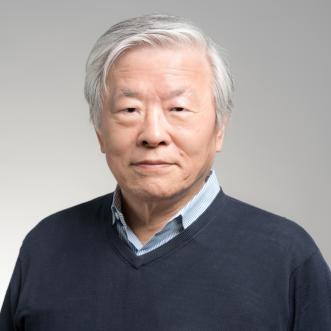





Learning and memory are vital for day-to-day living—from finding our way home to playing tennis to giving a cohesive speech. Some of us have personally witnessed the devastating consequences of memory disorders, whether it’s the severe inability to form new memories, as seen in Alzheimer’s patients, or difficulty in suppressing a recall of a memory of a highly unpleasant experience, as seen in PTSD patients. The main research interest in my laboratory is to decipher brain mechanisms subserving learning and memory. We seek to understand what happens in the brain when a memory is formed, when a fragile short-term memory is consolidated to a solid long-term memory, and when a memory formed previously is recalled on subsequent occasions. We also seek to understand the role of memory in decision-making, and how various external or internal factors, such as reward, punishment, attention and the subject’s emotional state, affect learning and memory. In summary, we study how the central nervous system in the brain enables our mind, with a focus on learning and memory.
Because much of the fundamental processes of and neuronal mechanisms for memory are expected to be shared among mammals, and a vastly greater variety of experimental procedures is available for rodents than humans, we use laboratory mice as the primary model for memory research. With mice or other animals, memory can be monitored only through the behaviors. Thus, it is inevitable that we use a whole, live animal. At the same time, researchers must identify the crucial events and processes that are ongoing inside the brain, permitting the specific and diverse aspects of learning and memory. This latter task is the challenge for memory researchers and neuroscientists in general because the brains of higher organisms are incredibly complex—organized in a multilayer of complexity, from tens of thousands of molecules, to thousands of different types of cells, to hundreds of functionally and structurally distinct cellular assemblies, and extensive yet specific networkings of these assemblies.
In order to meet this challenge, we employ highly specific genetic manipulation techniques, creating mutant mouse strains in which a specific gene, and hence its gene product, such as neurotransmitter receptors and enzymes, is deleted or inactivated only in a specific type of cell (spatial restriction) and/or a specific period of a behaviorally defined learning or memory process (temporal restriction). Alternatively, the gene encoding the tetnus toxin can be introduced to a specific type of cell and activated in a temporally controllable manner to block a neural signal transmission. This technique, generally called the conditional transgenic method, can be accomplished by micro-manipulating mouse eggs or embryos using the site specific recombination system, Cre-loxP, and the tetracycline-controlled transcriptional system, tTA-Otet. Virus vector (AAV, Lenti, HSV, etc.)-mediated genetic manipulation can be combined with these conditional transgenic methods. Further, the recently invented optogenetic methods—including those based on the channel rhodopsin and halorhodopsin, which activate and inactivate neurons, respectively, at a millisecond timescale—can be combined with the Cre-loxP system to rapidly manipulate neural transmission in a specific cellular circuit. We then subject these genetically engineered mouse strains along with the standard strain (called control mice) to a variety of analytical methods in order to detect the effect of the genetic manipulation (called phenotype detection). These methods include behavioral tasks (for example, maze and conditioning), recordings of cellular activities via single and multiple electrodes (in vivo electrophysiology with tetrodes and EEG) surgically implanted into a specific area of the brain, recordings of transmission at specific synapses of brain slices or cultured neurons (in vitro electrophysiology by field and patch clamp recordings), in vivo and in vitro optical imaging (with confocal and two-photon microscopy), and molecular and cellular biology. The abnormality one may observe in the genetically altered mouse strains in comparison with the control mice could be a deficiency or augmentation of a particular activity (phenotype). The phenotype observed at various levels of organizational complexities and associated specifically with the known genetic manipulation of the mutant will be very informative in our understanding the brain mechanisms subserving its behavior and cognition.
Currently Ongoing and Near-Future Research Projects
We continue to study the roles of hippocampal circuits in various aspects of hippocampal memory using the multi-facet approaches described above. In addition, our research interest extends into several other brain areas that communicate with the hippocampus through specific circuits and neuromodulators. These extended studies will allow us to investigate not only the basic functions of hippocampal circuits in learning and memory, but their modulations by reward, penalty, attention and emotion, as well as the role of learning and memory in decision-making, and vice-versa.
Our research projects include studying the:
Susumu Tonegawa received his Ph.D. in Molecular Biology from the University of California, San Diego. After postdoctoral training at the Salk Institute, he joined the Basel Institute for Immunology. In 1981, he was appointed Professor of Biology at MIT and a member of the Center for Cancer Research. In 1994, he founded the Center for Learning and Memory at MIT and, and, in 2002, the Picower Institute for Learning and Memory.
Andrea Bari
Postdoctoral Associate
Liam Brenner
Program Operations Coordinator
Frank Bushard
Technical Associate
Jayson Derwin
Technical Associate
Kaytee Flick
Arek Hamalian
Assistant Lab Manger
Shu Ying Huang
Research Specialist
Takashi Kawai
Postdoctoral Associate
Josh Kim
Graduate Student
Dennis King
Laboratory Manger
Rosary Lim
Graduate Student
Chanel Lovett
Research Specialist
Chris MacDonald
Research Scientist
Jared Martin
Technical Assistant
Mark Morrissey
Postdoctoral Associate
Shruti Muralidhar
Postdoctoral Associate
Teruchiro Okuyama
Postdoctoral Fellow
Michele Pignatelli di Spinazzola
Postdoctoral Associate
Carrie Ragion
Research Specialist
Mike Ragion
Research Specialist
Lily Smith
Technical Assistant
Chen Sun
Graduate Student
Daigo Takeuchi
Postdoctoral Fellow
Carl Twiss
Technical Assistant
Wenjiang Yu
Technical Assistant
Xiangyu Zhang
Graduate Student
Xiaoning Zhou
Technical Associate